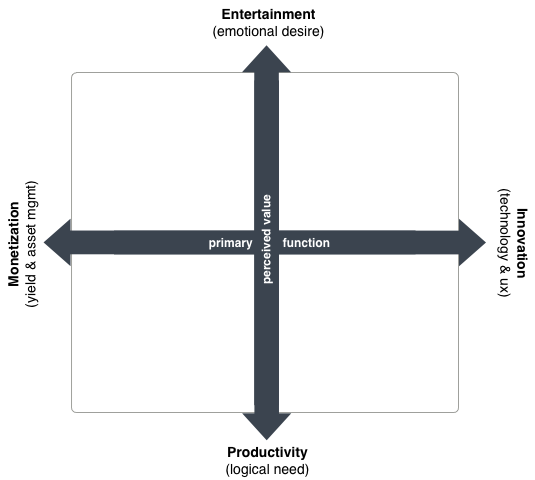Creating and Identifying Differentiated Value
Businesses exist for one major reason: the creation of value. This usually means having needs met for the customer and getting a good ROI for the company. Product management is an integral part of making these goals attainable for both parties.
An effective value creation plan needs to be in place to enable the provision of benefits to an organization and its clients. It makes it possible to bridge the gap between business strategy and execution. A good framework can be useful when looking to build something that creates or adds value.

What is Product Value?
Products are simply about value. But what exactly is that “value”? It depends on who you are asking.
Simply put, the value of a product is the benefit that a person or entity derives from its existence. It is common to look at it from the customer’s perspective as evaluated benefits minus costs. However, a product must also create value for investors and the management to make its existence worthwhile. Value must also exist for employees to put in their best.
What are the efforts you are making towards delivering value? What value do customers attach to all that you’re doing? A good understanding and clear answers to these questions are useful for improving your chances of success.
The Value Creation Plane
This Value Creation Plane, by Neal Cabage, is a Cartesian plane with intersecting spectrums. One of the spectrums relates to business function while the other concerns the perceived value by the customer.
The Value Creation Plane gives an idea of how to approach value creation to have an edge over the competition. Let’s consider how you can use the two angles to guide value creation.
Primary Function Spectrum (x axis)
This part of the moidel is what your company is doing to provide value to the customer. On one end of this spectrum is monetization while on the other is innovation.
With monetization, you create value for your customer by helping them to get the best returns from their assets. You bring value or add more value to customers when you create new assets through innovation on the other hand. The stage of market maturity determines which approach is better.
Focusing on monetization as your primary function is more advisable when you are a major market leader. This approach can also work if you can achieve economies of scale quickly enough in a new market cycle. Monetization enables you to maximize profits with minimal risk.
As you move into the later stages of market maturity, emphasis needs to be more on innovation. You stand at the risk of totally being at the mercy of customers without this. With supply outstripping demand, customers feel more in control of pricing. They can easily move to a competitor if they think your price is rather high and your product offers nothing unique.
Innovation helps you to overcome the threat of commoditization. It keeps your profits from declining too drastically as a result of the market reaching a saturation point. You can also be in a good position to tap into the benefits of monetization by being innovative.
It is not compulsory, however, that your business function falls clearly at either end of this spectrum. Numerous companies combine the elements of both successfully.
Perceived Value Spectrum (y axis)
It is safe to say that other stakeholders can expect no value in return if none is created for the customer. You may assume that is not something to worry about since your business function is geared towards providing just that.
However, how sure are you that what you are providing is valuable enough in the sight of the customer? How do users perceive that value you’re trying to create? That’s where the “Perceived Value” spectrum comes in.
On one end of this part of the Value Creation Plane is logical need or appeal. This has more to do with directing your attention toward enabling or enhancing productivity. Customers derive benefits from getting their problems solved.
You can also appeal to users by focusing on their emotional needs – getting them entertained or inspired. For instance, some people buy products simply to feel or look better, something that has nothing to do with productivity.
It is critical to connect to the customer through a logical or emotional appeal for them to see what you’re offering as valuable.
Later in the market maturity stages, you can look to cover these two classes of drivers of customer perceived value. This will help make your product relevant for as long as possible.
The Value Creation Plane can guide you on where to focus more. It lets you know the best way to position your product in the market. You can find the framework useful regardless of whether you’re a major player in your market or a player in a new market lifecycle.